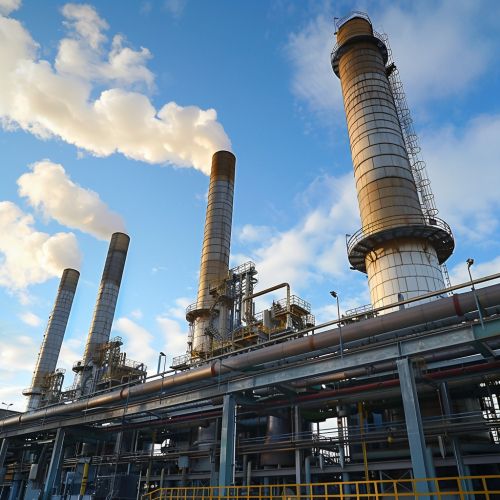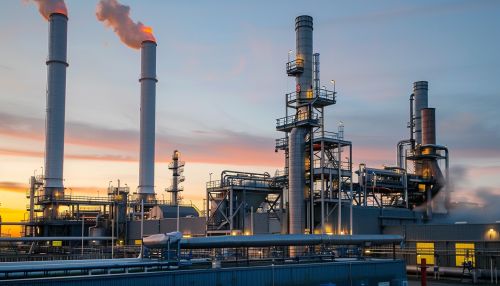Carbon Capture
Overview
Carbon capture (CCS) is a technology that can capture up to 90% of the carbon dioxide (CO2) emissions produced from the use of fossil fuels in electricity generation and industrial processes, preventing the CO2 from entering the atmosphere. The captured CO2 is then transported and stored underground in geological formations. This technology is viewed as a key tool in the fight against climate change.
Carbon Capture Technologies
There are several technologies currently in use or under development for carbon capture. These include post-combustion capture, pre-combustion capture, oxy-fuel combustion, and chemical looping.
Post-Combustion Capture
Post-combustion capture involves capturing CO2 after the fossil fuel has been burned and the CO2 has been released. The CO2 is separated from the other flue gases, compressed, and prepared for transport. This technology is currently the most widely used method for carbon capture.
Pre-Combustion Capture
Pre-combustion capture involves removing CO2 before the fossil fuel is burned. The fuel is first converted into a mixture of hydrogen and CO2, and then the CO2 is separated, compressed, and prepared for transport.
Oxy-Fuel Combustion
Oxy-fuel combustion is a process that burns fossil fuels in pure oxygen instead of air. This results in a flue gas that is primarily CO2 and water, making the CO2 easier to capture.
Chemical Looping
Chemical looping combustion is a newer technology that uses a metal oxide as a bed material providing the oxygen for combustion in the fuel reactor. The resultant flue gas is almost entirely CO2 and water, which can easily be separated.


Carbon Storage
Once the CO2 has been captured, it must be stored to prevent it from entering the atmosphere. This is typically done by injecting the CO2 deep underground into geological formations. These formations can include depleted oil and gas reservoirs, unmineable coal seams, and deep saline aquifers.
Geological Storage
Geological storage involves injecting CO2 into underground rock formations. The CO2 is typically injected at depths greater than 800 meters, where the pressure and temperature conditions cause the CO2 to become a dense fluid. This dense CO2 fluid is then trapped by the overlying rock layers.
Ocean Storage
Ocean storage is a less common method of storing CO2, and involves injecting the CO2 into the deep ocean. However, this method is not currently used due to concerns about the potential impacts on marine life.
Environmental Impact
While carbon capture and storage can significantly reduce CO2 emissions from fossil fuel use, it is not without its environmental impacts. These can include the energy required to capture and store the CO2, potential leakage from storage sites, and impacts from the extraction and transport of the fossil fuels.
Future of Carbon Capture
The future of carbon capture technology is uncertain. While it has the potential to significantly reduce CO2 emissions, it is currently expensive and energy-intensive. However, with continued research and development, the efficiency and cost-effectiveness of carbon capture technology could improve.
